Have you been hearing a bunch of information about the latest in mattress innovations, but have been unable to determine what’s true and what’s false? So many manufacturers and salespeople are throwing around terms like memory foam and latex to describe their products and their respective benefits, and it’s time to put the myths and misconceptions to rest!
We’ve put together a summary that dives into these terms to get to the heart of their likenesses and differences so that you can finally understand the difference between memory foam and latex. We’ll also discuss how you could benefit from having a mattress made from either material or both materials if you so choose!
Memory Foam vs. Latex Video

What is Memory Foam?
Memory foam was first developed by NASA1, who employed it for protecting their pilots during crashes. This material is a polyurethane foam that has been designed with many different chemicals. These chemicals allow the foam to become denser and energy-absorbing.
We go in-depth about how memory foam works, but for this discussion, it’s most important to know this type of foam adjusts to the exact shape of your body.
With memory foam, there is a noticeably slow recovery time. Meaning, that when you press your body into the material and then lift it, you will not see the foam resume its original form very quickly. This fact lends to its comfortability and support when it’s added to upper mattress layers. Manufacturers recognized the fantastic benefits this material can bring to people experiencing back or joint pain, and most top mattress brands use some type of memory foam in their beds. You can check out our best mattresses for 2024 here.
The Best Memory Foam Mattresses
Product
Firmness
Score
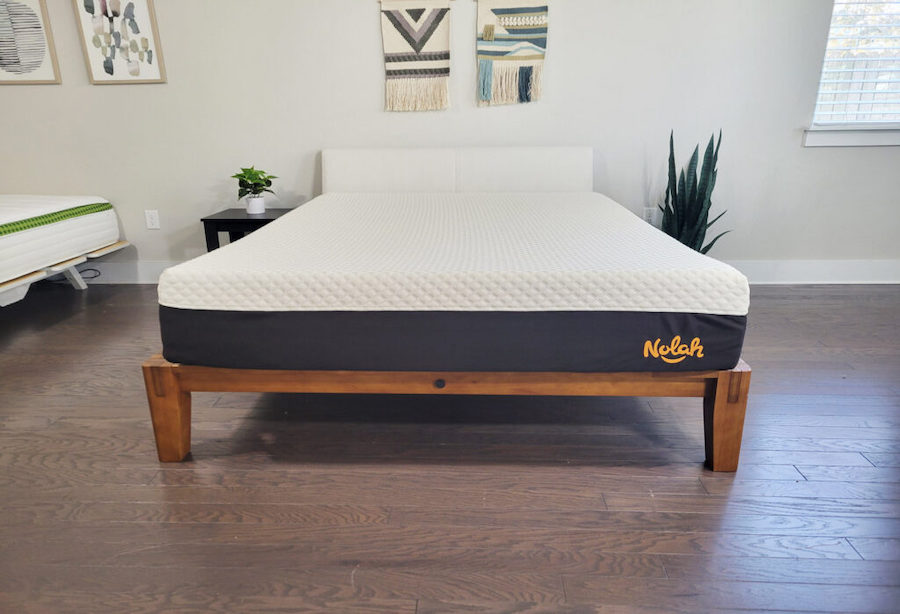
Product
Firmness
Score
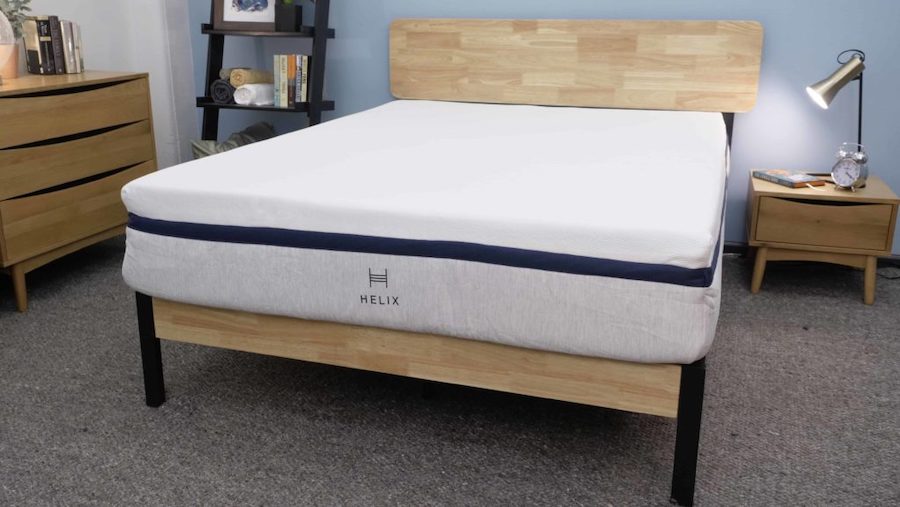
Product
Firmness
Score
Read More: What is Memory Foam?
There are different types of memory foam, including traditional, gel, and open-cell.
Traditional Memory Foam
Traditional memory foam is the most standard and initial type created. This style of foam doesn’t come with extra innovations related to cooling, so it’s likely to sleep hot, which is a downside for those prone to overheating at night.
Gel Memory Foam
Memory foam infused with gel microbeads is known as gel memory foam. The gel microbeads help make cool the foam. As a result, this memory foam type helps with temperature regulation and is more suitable for hot sleepers.
Open Cell Memory Foam
Open-cell memory foam features the same ingredients as traditional. The difference is in the structure because open-cell foam has internal pockets. This delivers more ventilation, helping disperse heat and cool the material.
Get More Info: Best Memory Foam Mattress
What is Latex?
Latex is in contrast to memory foam, in that it has a fast recovery time and more bounce. If you press your hand into a latex bed and then lift your hand, the mattress will resume its original shape quickly.
Several types of latex are used for mattresses. The first is natural latex, which comes from rubber trees2 and is the purest form of its kind. Natural latex can be economically made and is the ideal choice for someone who wants an all-natural option.
Another option is synthetic latex, a man-made version of latex constructed with various materials, including petrochemicals. The most notable difference between mattresses made from synthetic and pure latex is that the synthetic version tends to have less bounce and feel more akin to a memory foam option.
Additionally, there are two other subcategories of latex. We will briefly discuss these two types and their associated benefits.
Read Our Full Guide: Best Latex Mattress
Best Latex Mattresses
Product
Firmness
Score
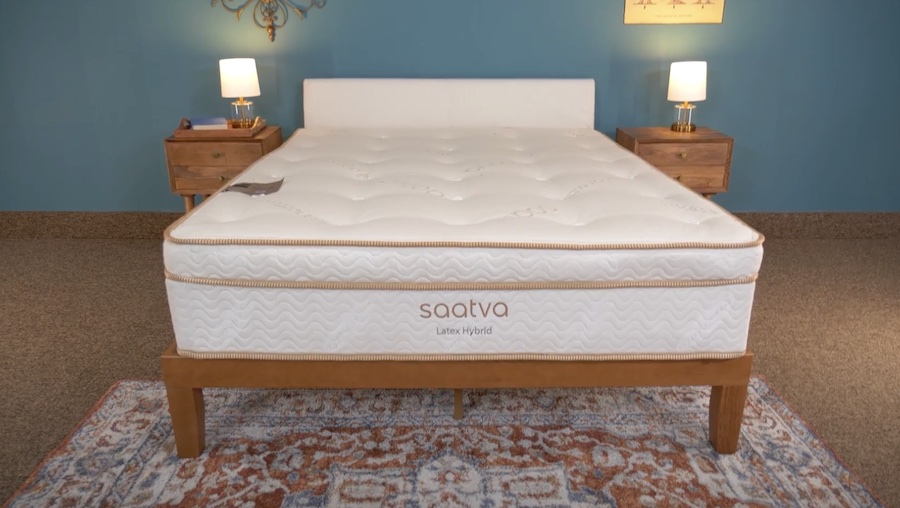
Product
Firmness
Score

Product
Firmness
Score
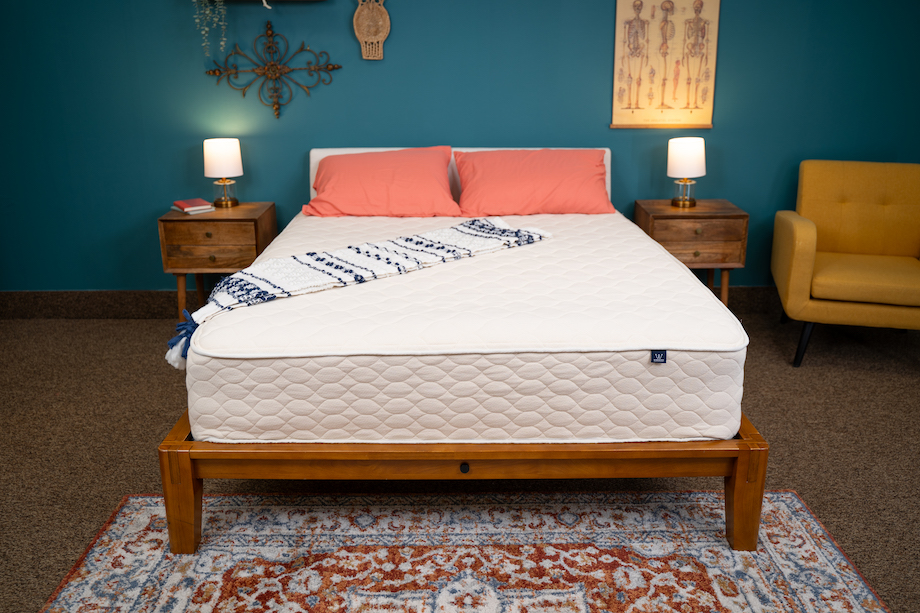
Product
Firmness
Score
Talalay Latex and Dunlop Latex Options
The main difference between the two is that Talalay is known to be a lighter version and consists of more air in the material. Conversely, Dunlop is known for being the denser of the two and therefore, much heavier. Choosing between Talalay and Dunlop comes down to your needs.
Some people may prefer Talalay for a couple of reasons. First, Talalay is more lightweight, making it easier to transport. Second, the fact that it can hold more air means that it will remain cooler throughout the night.
The main reason to employ the Dunlop option instead is that, over time, it tends to keep its shape and last longer. Because of its density, beds made with Dunlop usually avoid early sagging and are more durable.
For More Information: How Does Latex Density Affect the Mattress?
Compare the Best Latex and Best Memory Foam Mattresses
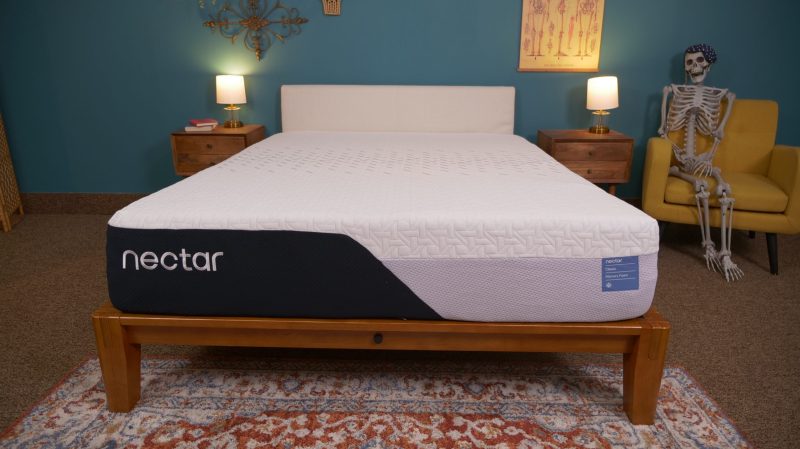
|

|

|

|

|

|
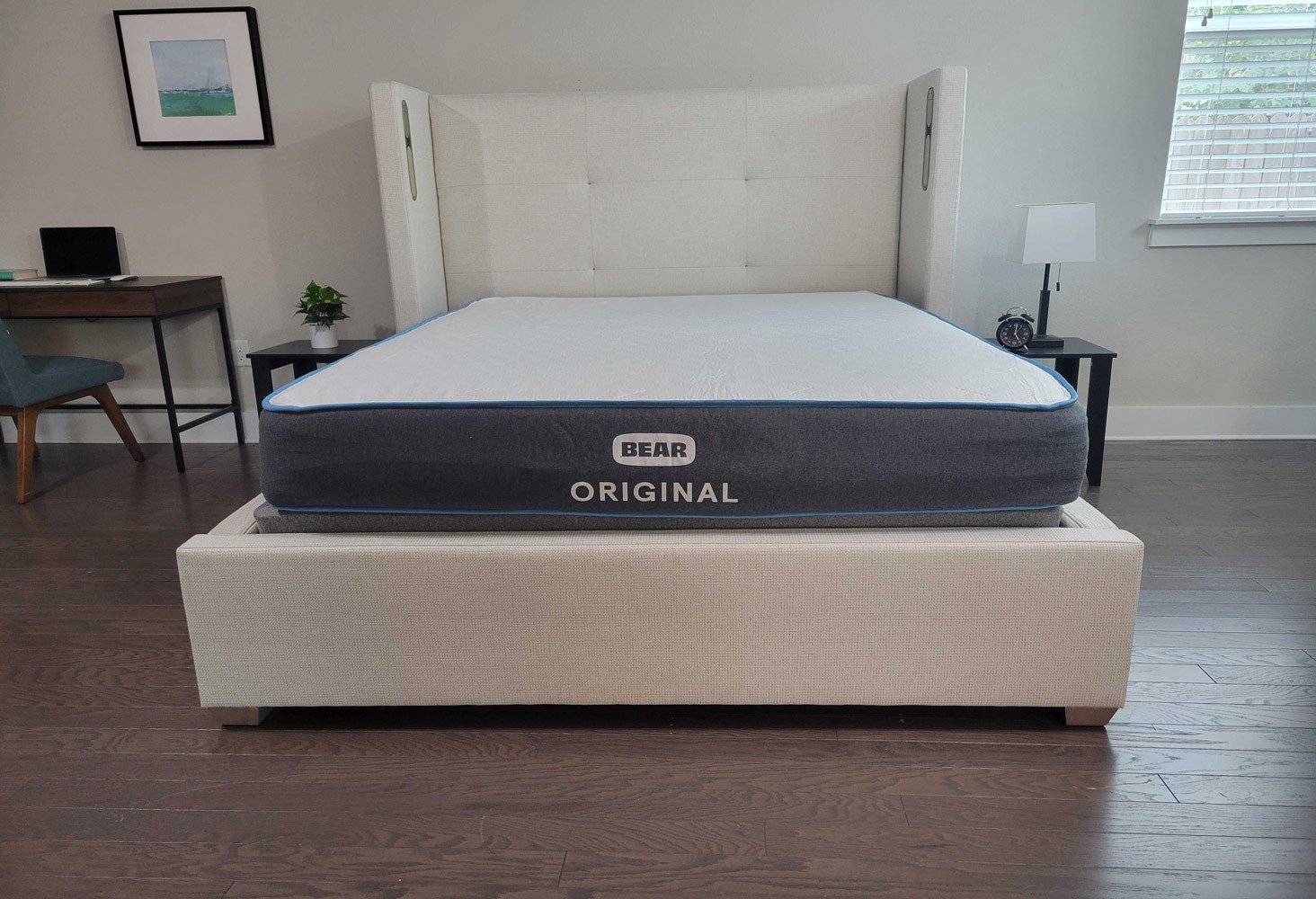
|
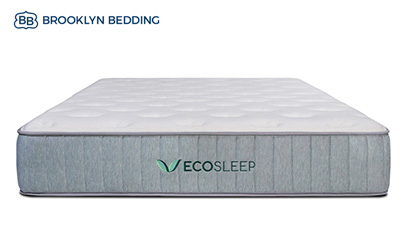
|
|
| Nectar Mattress | Saatva Latex Hybrid Mattress | Nolah Signature All-Foam Hybrid Mattress | Nolah Natural Mattress | Helix Midnight Mattress | WinkBeds EcoCloud Mattress | Bear Original Mattress | Brooklyn Bedding EcoSleep | |
| Rating | ||||||||
| Firmness | Firm: 7.5/10 | Firm: 7/10 | Medium: 5/10 | Medium-firm: 6/10 | Medium-firm: 6/10 | Medium: 5.5/10 | Firm: 7/10 | Multiple firmness options |
| Material | Foam | Latex | Foam | Latex | Hybrid | Latex | Foam | Latex |
| Cooling | — | — | — | |||||
| Warranty | Lifetime warranty | Lifetime warranty | Lifetime warranty | Lifetime warranty | 10-year warranty | Lifetime warranty | Lifetime warranty | 10-year warranty |
| Shipping | Free shipping | Free white glove delivery | Free shipping | Free shipping | Free shipping | Free shipping | Free shipping | Free shipping minus HI and AK |
| Trial Period | 365 nights | 365 nights | 120 nights | 120 Nights | 100 nights | 120 nights | 120 nights | 120 nights |
| Best For | Back Sleepers, Back Pain, Stomach Sleepers, Side Sleepers, Couples | Stomach Sleepers, Back Sleepers, Back Pain, Hot Sleepers | Side Sleepers, Back Sleepers, Hot Sleepers | Side Sleepers, Back Sleepers, Stomach Sleepers, Hot Sleepers, Back Pain | Couples, Back Sleepers, Side Sleepers | Back Sleepers, Side Sleepers | Hot Sleepers, Back Sleepers, Side Sleepers, Hip Pain | Back Sleepers, Stomach Sleepers, Hot Sleepers |
Foam vs. Latex Bed: Major Differences?
The major differences between memory foam and latex will impact everything from the price to how it performs. Both materials offer a unique set of benefits, but you’ll need to consider these key differences to better understand which material suits you.
Price
The price tag is one of the first things most people look at when shopping for a new mattress. In general, latex mattresses are more expensive than memory foam ones. This is because latex is often seen as higher quality material. Latex is also more durable than memory foam, so it may be worth the investment if you’re looking for a mattress that will last for years to come.
Feel
The feel of a mattress is important for many people. Latex mattresses often feel springy or firm. If you’re looking for a mattress that will give you a little bit of pushback, then a latex mattress may be a good option. On the other hand, memory foam mattresses often feel soft or sinking. This is because memory foam conforms to the shape of your body when you lay down. If you’re looking for a bed that will give you a feeling of being hugged, then a memory foam mattress may be the right choice.
Support
Both latex and memory foam mattresses can provide good support. Latex mattresses are often better at supporting the body because they’re firmer. This added firmness gives latex mattresses a bit more structure, which can benefit people who need extra support for their back. Memory foam mattresses are also good at supporting the body, but they may not be as beneficial for people who need extra support. This is because memory foam mattresses can sometimes be too soft, which can cause the body to sink in too much, throwing off spine alignment.
Pressure Relief
Pressure relief is an important factor to consider when choosing a mattress, especially if you have achy joints. While latex beds can help alleviate pressure, memory foam is going to be the better option for those seeking advanced pressure relief. Memory foam contours the sleeper’s body more closely, providing a cradle that makes this material superior in this category. Latex mattresses are bouncier and therefore, offer less sinkage than memory materials.
Lifespan & Durability
Latex mattresses are typically more durable than their memory foam counterparts. Some latex beds may last up to 20 years with proper care, while memory foam lasts around ten years. Latex is a more resilient material, meaning it bounces back into shape faster and is less likely to sag over time. On the other hand, memory foam is more susceptible to wear and tear. It can break down over time, especially if it’s not properly supported. This means that memory foam mattresses may need to be replaced more often than latex mattresses.
Read More: How Long Do Mattresses Last?
Temperature Regulation
One of the benefits of latex over memory foam is temperature regulation. Latex is a temperature-neutral material compared to memory foam, which means it could be better for people who sleep hot. Memory foam tends to absorb body heat and can sometimes cause sleepers to feel uncomfortably warm during the night. However, some memory foam mattresses have gel and copper infusions that help the material cool down.
For More Information: Best Cooling Mattresses
Hypoallergenic
Another advantage that latex mattresses have is that they are more hypoallergenic than memory foam mattresses. Latex is a natural material that repels dust mites, mold, and other allergens. Memory foam mattresses are made of synthetic materials that can attract and harbor dust mites and other allergens, meaning they need more frequent cleaning. For this reason, a latex mattress may be a better option for you if you struggle with allergies.
Conformity
The major difference between memory foam and latex mattresses is how they conform to your body. Memory foam options will conform to the exact shape of each individual. The latex option, however, will compress and bounce, and will only conform to the general impressions that your body makes. Whichever of these options you prefer depends on your personal preference and your sleep needs.
How Are Memory Foam and Latex The Same?
The main likeness shared between these choices is that they both provide posture support. Being that they both conform in some way to the shape of your body, pressure relief is supplied to the spine, neck, and joints.
Frequently Asked Questions
Which lasts longer latex or memory foam?
Latex mattresses are expected to last longer than memory foam. Both materials are durable, but latex is ranked better in this category. Latex can last for up to 20 years with proper care, whereas memory foam can last for up to 10 years.
Is latex or memory foam better for back pain?
Both materials can help with back pain, but it depends on the individual sleeper and the overall firmness of the mattress. Some people find that latex provides better support for back pain, while others find memory foam more comfortable and supportive.
Want to Learn More? Check out our guide on the Best Mattresses for Lower Back Pain
Are latex beds good for side sleepers?
Latex beds can be good for some side sleepers, such as those carrying more weight. Latex provides some contouring for pressure relief in this position, but memory foam will generally be the better of the two. The reason for this is that memory foam excels at contouring and alleviating pressure, a major priority for this sleep style.
Final Thoughts
Overall, both of these material types can be enjoyable for many different types of sleepers. Deciding what’s right for you is dependent on several factors.
- Do you prefer to sleep on a pressure-relieving and motion-absorbing bed? Do you regularly sleep on your back or your side and are concerned with spinal alignment and avoiding joint stiffness? Then, it’s likely that you would receive many benefits from choosing memory foam.
- Are you someone who is concerned about the environment and wants to pick a natural bed? Are you someone who’s trying to find the delicate balance between a cool night’s sleep, comfort, and support? If you’ve answered yes to these questions, then you might just find a latex bed to be exactly what you’ve been looking for.
There are many resources out there that are aimed at helping you get it right the first time and choosing a mattress that fits your unique sleep needs. Making that decision ultimately depends on which benefits you hope to see the most.

Jill Zwarensteyn
Editor
About Author
Jill Zwarensteyn is the Editor for Sleep Advisor and a Certified Sleep Science Coach. She is enthusiastic about providing helpful and engaging information on all things sleep and wellness.
Combination Sleeper
References:
- “Memory Foam”. NASA. 2016.
- “Tapping and coagulation”. Brittanica. Webpage accessed April 1, 2024.